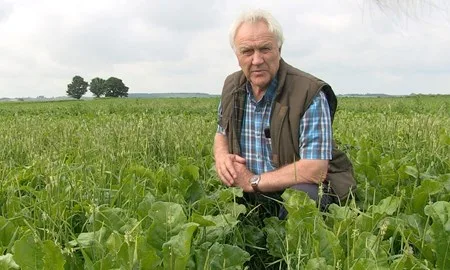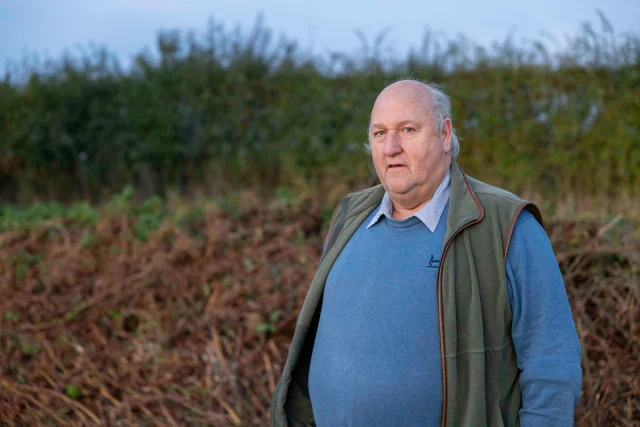Published on 6th April 2018
Disease Management
Six-steps to getting sugar beet off to a good start

Last year Paul Drinkwater and his team at Abbots Ripton Farming Company (ARFCo) produced the best crop of sugar beet the business has ever managed. Here are his six tips to improve sugar beet performance.
Last year Paul Drinkwater and his team at Abbots Ripton Farming Company (ARFCo) produced the best crop of sugar beet the business has ever managed. Across more than 400 hectares of beet the average yield was up slightly on the farm’s five-year average, but what captured his attention was a 13ha field that yielded 129t/ha. This is by far the best yield in the farm’s history and while it surprised everyone it also raised many questions, the biggest of which was that the yield came not as might be expected from a field lifted at the end of the season, but from a field of Haydn harvested on 9th November.
“We’re still searching for answers,” says Paul when seeking to explain this remarkable performance. “It didn’t look all that special, but the beets were huge. Another crop in a neighbouring field lifted in February did a rather disappointing 65t/ha. We’re now looking at individual field conditions for an explanation of variable performance, but it brought home to me how much we still have to learn about this crop,” he adds.
While the weather during the season plays a big part in how a crop does, Paul’s management of the crop has changed markedly over the past decade, so what tips can he share with others wanting to improve performance?
1. Field selection
Most of the beet grown at ARFCo is on skirt fen, a moisture retentive soil with 7-12% organic matter, and sandy loam silts. These soils are easier to work, warm-up quicker in the spring and make lifting the beet easier in the autumn and winter. Be prepared to adapt soil management techniques to soil type and weed spectrum. That which is to be autumn cultivated needs prioritising, so the task is performed when the soil is dry. Some land is ploughed and pressed ahead of the winter, others will be shallow cultivated and left over winter before being lightly cultivated ahead of the drill. For the fields with high black-grass populations he is looking into direct drilling but has not taken the plunge yet.
“Ground preparation and drilling is where you earn your money with sugar beet. It’s not like wheat where you can get away with drilling in to wet and cold soils yet still expect 10t/ha. Just as with peas, if you force sugar beet in you will live with the consequences,” says Paul.
2. Trust the operator
“Empower your staff to use their initiative. If part of a field needs working again let them do it. By the same token, if they say it’s not ready to go yet, accept it and move on,” he says.
3. Seed-bed preparation and drilling
Don’t be obsessed with fine seedbeds; it’s the soil around the seed that’s important. We now have drills that move clods out of the row so the soil around the seed is a fine tilth.
“As long as we have two to three inches of tilth, so the seed is sown into 1-1.5 inches of good soil then we can live with a few clods on the surface,” he says.
Avoid over-working soils and preserve moisture. “We used to pulverise the soil but didn’t appreciate we were creating compaction that would need rectifying later. We aim to drill up behind the cultivator every day so if it becomes wet we’re not left with a soggy mess that is unworkable and takes a long time to dry out.”
4. Drilling and establishment
Reduce the chances of weed beet by opting for low-bolting varieties and aim for 100,000 plants per hectare. For ARFCo this means drilling at about 1.2 units per hectare.
“Our aim is to finish drilling by the end of March, but we’re not beholden to a calendar date; conditions at drilling are more important. We also have a weed beet issue on one farm and controlling it can be difficult. Last year we hired a Garford optical hoe from a neighbour and the results were staggering. It took out most of the unwanted plants leaving only a few to be controlled with the weed-wiper,” says Paul.
5. Nutrition
Like many farms, ARFCo makes good use of soil mapping for variable rate fertiliser applications, but it has also heeded the advice of the BBRO in timing applications better to meet demand from the plant. This has led to reductions in the overall amounts of applied fertiliser.
“All fields receive P and K applications at a variable rate based on what the soil analysis indicates is needed. For nitrogen it is far simpler, most of the crop is on organic soil and receives 40kg N/ha after drilling while that on the sandy loam will receive 85kg N/ha. All nitrogen is applied after drilling to avoid acidifying the soil around the seed which can impair germination and lead to uneven crop emergence,” he says.
6. Weed control
Almost 40 years of growing sugar beet has made its mark on Paul and weed control is not something he is willing to compromise. Because beet plant size is largely immaterial in controlling weeds, his priority is achieving good control of a range of broad-leaved and grassweed species without risking crop safety. He achieves this by making the most of pre- and post-emergence herbicides, but he also pays close attention to the amount of active substance being applied to ensure loading limits are within permitted allowances and avoid scorching the crop.
“Weed control is an excellent example of how practices have evolved. There was a time when we would need to apply five to six different herbicides to get the results we wanted. After this the phytotoxic effects on the crop almost made you cry. Fortunately, we no longer have to nearly kill the crop to achieve good weed control,” says Paul.
“On the heavier ground we start with a pre-em of Pyramin (chloridazon) while on the light soils it is largely unworthwhile. We base all post-em weed control around Betanal maxxPro (desmedipham + ethofumesate + lenacil + phenmedipham) applied at 1.25 litres/ha and in a tank-mix with Goltix (metamitron). This is a classic case of less-is-more, but the lenacil combined with its oil dispersion (OD) formulation means Betanal maxxPro does the job we need it to. On the heavier land we would typically expect to have to make two applications while on the light soils we normally make three. By opting for an application rate lower than the full-label-rate of 1.5L/ha we allow ourselves the third application without exceeding ethofumesate loading limits,” he adds.
Sugar beet yields: still a long way to go to fulfil potential
Trials performed at Broom’s Barn in 2006 investigated the benefit of added agronomy input, including irrigation. The best yield came from an irrigated trial that yielded 123 t/ha (adjusted). At the time this was considered a high yield which few growers were going to achieve in the coming years. In 2006, the control yields in the Recommended List (RL) trials were 84 adjusted t/ha (no irrigation) while in 2017 they were 113.7 adjusted t/ha – a season where drought was not a restraining factor – an increase of about 35%. The 2006 yield of 123t/ha could be translated to about 166t/ha today, explains independent sugar beet consultant Mike May.
“Through better varieties and seed priming techniques to greater control of weeds, pests and diseases, we’ve made incremental gains in yield potential over a long period of time and growers have benefited from this. But now growers are delivering yield gains through their decisions on farm. It’s about attention to detail and understanding the little subtleties that make the difference,” says Mike.
For example, he says recognising that it’s the quality of soil around the seed rather than across the whole field is vitally important. “It’s easy to overwork soil in the pursuit of unnecessarily fine tilth and this will easily lose you yield,” says Mike.
Other work on drilling date and crop nutrition has also given growers the confidence to hold back until conditions improve or resist the temptation to apply more fertiliser.
“It doesn’t matter what shade of green the canopy is, just as long as its green. Nitrogen is simply to help get the plant established so must be applied early. Some of the more recent varieties have naturally paler canopies so don’t take this as an indication that the plant needs more nitrogen,” he says.
“Similarly, don’t be tempted to push drilling date. Although trials suggest that delaying drilling from the start of March until the start of April will reduce yield potential by 10%, this is under suitable drilling conditions. In reality, there is more to be lost by forcing drilling simply to meet a target calendar date than by waiting for conditions to improve,” he adds.
Reliably high germination percentages have improved crop establishment while advances in drill design have ensured greater repeatability in the spacing between sown seeds. Both have contributed to producing consistently high performing crops.
“The target of 100,000 plants per hectare was partly to allow for germination losses, but the germination percentage of seed is now reliably more than 95%. In practice however, just 80,000 plants per hectare are enough, but at this level plant spacing becomes critically important to achieving an even root size. Conditions at drilling mean this level of accuracy is not always achievable so it makes sense to aim for 100,000 plants per hectare as any harvest losses resulting from uneven plant size will soon eclipse any savings made on seed at drilling,” he says.
If you have any questions, please contact your local CTM or Tweet @Bayer4CropsUK.
Why not sign up to Bayer Crop Focus emails?
Receive regular in-season Bayer Sugar Beet Crop Focus emails to stay up-to-date on sugar beet agronomy advice




